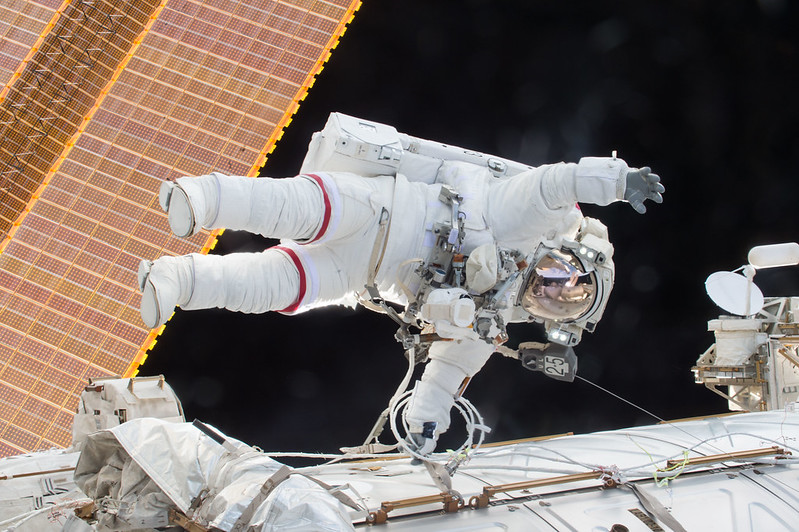Risk of Decompression Sickness
When astronauts move from a pressurized environment like a spacecraft to the lower-pressure environment encountered during spacewalks, health complications can arise due to what’s known as decompression sickness. During decompression sickness, dissolved nitrogen in the bloodstream begins to bubble, which can damage body tissues.
Also known as “the bends,” decompression sickness can occur on Earth when scuba divers attempt to surface too fast. As they quickly ascend, nitrogen gas dissolved in their body tissues rapidly forms bubbles which can cause pain so severe it may force a diver to double over. In severe cases, these bubbles can impact breathing or even block blood vessels and cause stroke-like symptoms.
In space, this same phenomenon can occur when an astronaut moves from a spacecraft to a lower-pressure spacesuit for spacewalks. Spacewalks are one of the highest-risk activities an astronaut will ever do, so decompression sickness is both a health and operational risk.
What can be done about it?
Earth-based training in both high- and low-pressure environments prior to missions helps astronauts know what to expect in altered pressure situations, including when they might be at risk for decompression sickness. Current protocols hold that when experiencing decompression sickness symptoms, astronauts should safely but rapidly end their spacewalk and return to the pressurized environment of their spacecraft.
Future missions deeper into space will likely require more frequent spacewalks. NASA is preparing for associated risks in a variety of ways. For instance, new variable pressure space suits currently in development may provide some initial ways to address decompression sickness during the spacewalk itself. The suits’ technology aims to allow astronauts to quickly increase the pressure within their suits, which could help stabilize the afflicted crew member and allow for safer return. But astronauts who wear such suits may also experience reduced mobility, decreased manual dexterity, and increased fatigue during spacewalks – since pressurized suits are heavier – so decisions will need to be made about risk tradeoffs.
In addition, the spacecraft for future deep space missions could be designed to operate at lower pressures, helping to limit the pressure changes between habitat and spacesuit, which will reduce risks. Science-backed protocols prior to spacewalks that involve breathing carefully calibrated high levels of oxygen to displace the nitrogen in the body will also help prevent nitrogen bubbles from forming when traveling to a lower-pressure environment.
Did you know?
Even flying in an airplane puts a person at risk of decompression sickness due to the large change in environmental pressure at high altitudes. Aircraft cabins are pressurized to counter that risk. People who plan to fly in high-altitude military aircraft breathe high levels of oxygen before the flight – much like astronauts do before a spacewalk – to help avoid decompression sickness.
Formal risk description: Risk of mission impacts and long-term health issues due to decompression sickness
Research in support of this risk: Latest evidence
Explore more: Human System Risk Board resources
Related Content






























